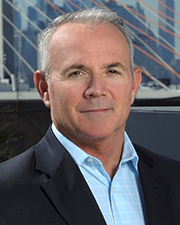
Man vs. Machine: How technology can drastically reduce fatal blind spot incidents on construction sites - by Mason Ford

The construction industry is heading in the direction of autonomy and robotic equipment operation, but before we get to that critical point, we first need to solve safety issues with the integration of object detection and avoidance technology. A roadmap exists to get us there, as the automotive industry is already leveraging backup cameras and avoidance technology, but the construction industry has been slow to follow suit.
The core issue stems from the on-site reality of construction projects, where man/machine interface is virtually impossible to avoid, thus increasing safety risks. According to the Bureau of Labor Statistics, since 2011 more than 70 workers in the U.S. died from blind spot incidents—when a backing vehicle strikes a worker who is standing, walking, or kneeling behind the vehicle.
Although as an industry we are still at the early stages of this critical and long-overdue safety overhaul, equipment manufacturers are in a race to provide improved technologies in their high priority equipment. Much of these improvements will be realized and available in the next five years.
While that is fantastic news, it also means it will likely be another 10 to 15 years before all existing machines nationwide are replaced with new and improved technology. In the meantime, Skanska has begun installing improved after-market technology on machines working on our sites.
To help speed up the process of significantly decreasing blind spot incidents on worksite, we piloted various types of technology on our equipment in all four corners of the United States and following the success of that test program, we launched a program and made a capital investment to have blind spot technology installed on our critical equipment by the end of this year in a phased approach, beginning with Skanska-owned equipment including excavators, backhoes, self-propelled tunnel equipment, dozers, scrapers and crawler cranes, dump and concrete trucks, service trucks and finish grading equipment, followed by third-party rentals and subcontractor and vendor equipment.
Our overarching goal is to push the entire construction industry to adopt this important technology, better protecting the millions of workers on various job sites across the U.S. regardless of which construction firms oversee the projects.
As is the case in most industries, larger employers typically need to lead the charge on institutional changes. The construction industry is no different. And given that close to $2 trillion worth of projects are in various stages of development in any given year, it would be difficult to argue that the construction industry overall, and the larger firms in particular, cannot afford to further invest in worker safety, especially as technology already exists.
As part of our plan, we’re asking our subcontractors, vendors, and customers who come on our project sites to have some sort of blind spot technology built into their equipment. Meanwhile, as phase one of our own program, we are installing blind spot technology into existing machines, with a priority on loaders, excavators, backhoes, self-propelled tunnel equipment, dump and concrete trucks, service trucks, finish grading equipment, and dozers and scrapers.
Furthermore, our company recently rolled out our Care for Life 5 framework, a program designed to influence laser-focused behavior around existing safety standards, spur consistent planning, and foster a disciplined culture of responsibility where all of our team members — from our job sites to our offices — understand the critical role they play in executing safe work environments.
As we work with our partners and manufacturers to change the industry’s relationship with blind spot technology, we eventually want to get to a place where a vehicle comes onto a jobsite and won’t ever strike a human being. Whether a zero-incident environment is achievable is an open question, but we’re doing our part to get us there. We hope the rest of the industry will do the same.
Mason Ford is the director of sustainability and equipment services at Skanska USA, New York, NY.